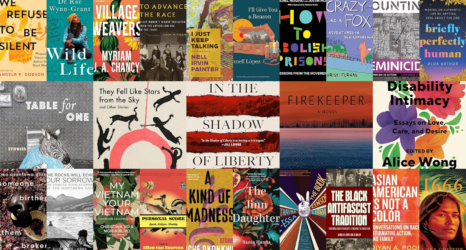Six months ago, when Marc Solomon went to press with his new book, Winning Marriage: The Inside Story of How Same-Sex Couples Took on the Politicians and Pundits—and Won, there were 17 states with marriage equality and the movement was gaining ground at an unprecedented pace. In recounting the struggles that led to that point, Solomon, a long-time fighter for lesbian and gay marriage rights, expressed amazement at how far the country had come and how much progress had been achieved.
To anyone watching from the sidelines, the growing tally of wins can be hard to follow. After the Supreme Court ruled last year that the federal Defense of Marriage Act violated the U.S. Constitution, the rate of change accelerated to nearly whiplash speed. Freedom to Marry, the organization for which Solomon serves as national campaign director, reports,
[A] record number of Americans live in states that recognize relationships between same-sex couples: Over 64 percent of the U.S. population lives in a state currently issuing marriage licenses to same-sex couples state-wide.
In 35 states—plus Washington, D.C., and St. Louis, Missouri—lesbian and gay couples are now free to marry, and challenges to marriage bans are working their way through the courts in the rest of the country. Just this past weekend, SCOTUS refused to entertain Florida’s request to prevent marriages for lesbian and gay couples, and on January 6, Florida is set to become state #36.
As a key strategist on the front lines of the marriage equality movement who helped bring about the 2003 Massachusetts victory and who has fought tirelessly for over 13 years, Solomon chronicles the work that has gone into guiding the nation to live up to our Constitution’s promise of equality for all. His book takes us behind the scenes, bearing witness to the many components of this successful ongoing campaign: from organizing, polling, data-gathering and lobbying, to testifying, button-holing, cajoling and outright pressuring. Frankly, it’s exhausting to read about and inspirational to see how all this effort paid off and continues to do so.
Solomon dedicates the book to fellow movement leaders Evan Wolfson and Mary Bonauto (Bonauto is a new MacArthur “Genius” prize recipient). Wolfson and Bonauto were instrumental in formulating a road map to the destination of nationwide marriage equality. Teaming up with the ACLU and other supporters, they drafted a strategy document, “Winning Marriage: What We Need to Do.” The plan would require determination and vigilance on a variety of fronts:
The way to a national win was to get one of the two national actors—either Congress or the U.S. Supreme Court—to act. However, history showed clearly that neither would act until there was a critical mass of states and critical mass of public support.
They aimed to win full marriage equality in 10 states, civil unions in another 10 states, limited protections in yet another 10, with the idea of growing support in the remaining 20 states. How long did they anticipate that this 10-10-10-20 program would take? Until 2020.
In hindsight that deadline might seem pessimistic. No one then could have predicted that we would stand, as we do now, on the threshold of a full victory six years ahead of that schedule. Granted, Solomon’s team was not the only group fighting the fight, and he downplays the frustration many felt when the American Foundation for Equal Rights launched its landmark federal trial of Proposition 8, California’s ban on marriage equality. At the time, there was concern that it was too early to move through the courts. Numerous marriage rights advocates wanted to secure greater support around the country before pushing a trial up to the Supreme Court.
During the time that the Prop 8 trial went from courtroom to courtroom, Freedom to Marry worked with lawmakers and Gov. Andrew Cuomo (D-NY) to bring marriage equality to New York in 2011 and built coalitions to orchestrate the first voter ballot wins—in Washington, Maryland, and Maine—in 2012. In preparing for the ballot fights, the organization made a discovery that basically cracked the code to open the hearts of undecided and somewhere-in-the-middle voters. Solomon credits strategist Thalia Zepatos, director of public engagement for Freedom to Marry, with figuring out that the pro-marriage rights campaigns around the country had been focusing almost exclusively on civil benefits, and the harm inflicted on lesbian and gay couples as a result of second-class citizenship. Also, she discovered, there had been too much finger-pointing and accusations of bigotry. If they wanted to win people over to the cause, defenders of marriage equality needed to highlight love and commitment (i.e., the reason why lesbians and gay men want to marry), to find common ground with potential opponents (e.g., valuing freedom, practicing the Golden Rule), and to model the pathway to understanding (e.g., introduce straight people who have had a change of heart).
Armed with new and powerful messaging strategies based on Zepatos’ research, the Freedom to Marry coalitions paved the way for a sea change in American politics on the issue of marriage equality. They disproved old myths about how support for marriage rights could be harmful to politicians’ careers; they showed that equality could win at the ballot box; they contributed to an environment where supporters outnumbered detractors in numbers that keep on growing.
One of the most surprising contributions of Winning Marriage is the perspective it provides on President Obama’s evolution into a truly fierce advocate. According to Solomon, when Obama was running for his senate seat, he learned about gay rights history and heard about Stonewall for the first time from a gay campaign worker. The book goes on to recount the political strategizing and maneuvering that led to Obama’s 2012 historic pro-marriage rights declaration. Solomon pushes back at the notion advanced by many at that time that Vice President Joe Biden forced the issue: “It’s clear that Obama himself had made the decision, it was a decision he believed in, and he wasn’t forced by his vice president into anything other than accelerating the announcement by a couple of weeks or so.”
Solomon emphasizes that there is no down-side for politicians who stand on the side of marriage rights:
My experience was that once electeds got over their caution and fear and came on board, they recognized the fact that their support represented the best of who they were and the best of what the country is. For Democrats in particular, it embodies the aspirational call for justice and equality, and the expansion of civil rights, which is the party at its best.
Now that a conflict has arisen within the appeals courts, with the Sixth District Court of Appeals last month becoming the first to rule against marriage equality, the Supreme Court will need to act before too long to bring about a national resolution.
While we await a national victory, Winning Marriage makes for good reading in the trenches. Solomon helps us measure the distance we have come and look forward to a time when we can put this battle behind us. The big win—equality for all—can’t come soon enough.





